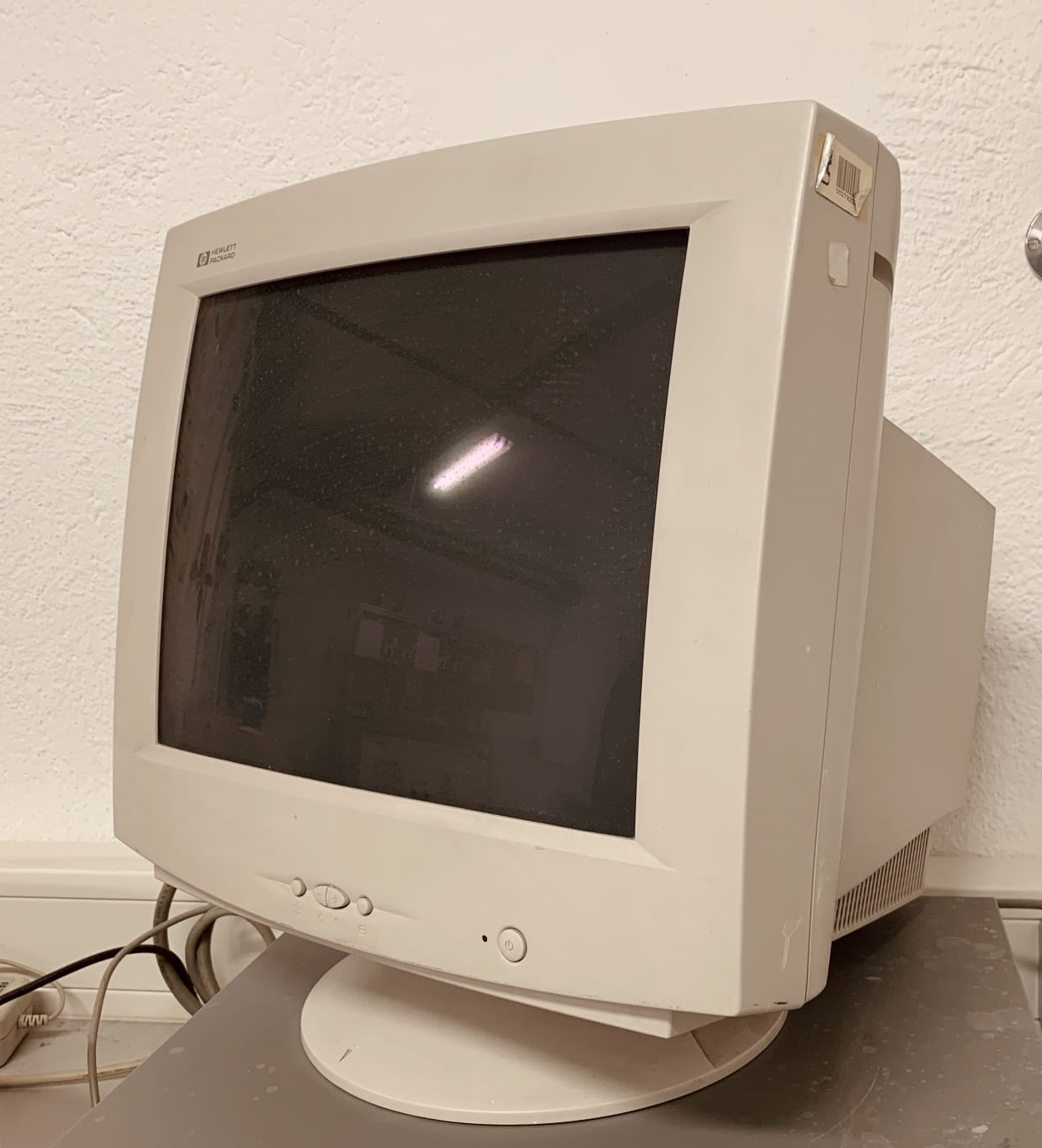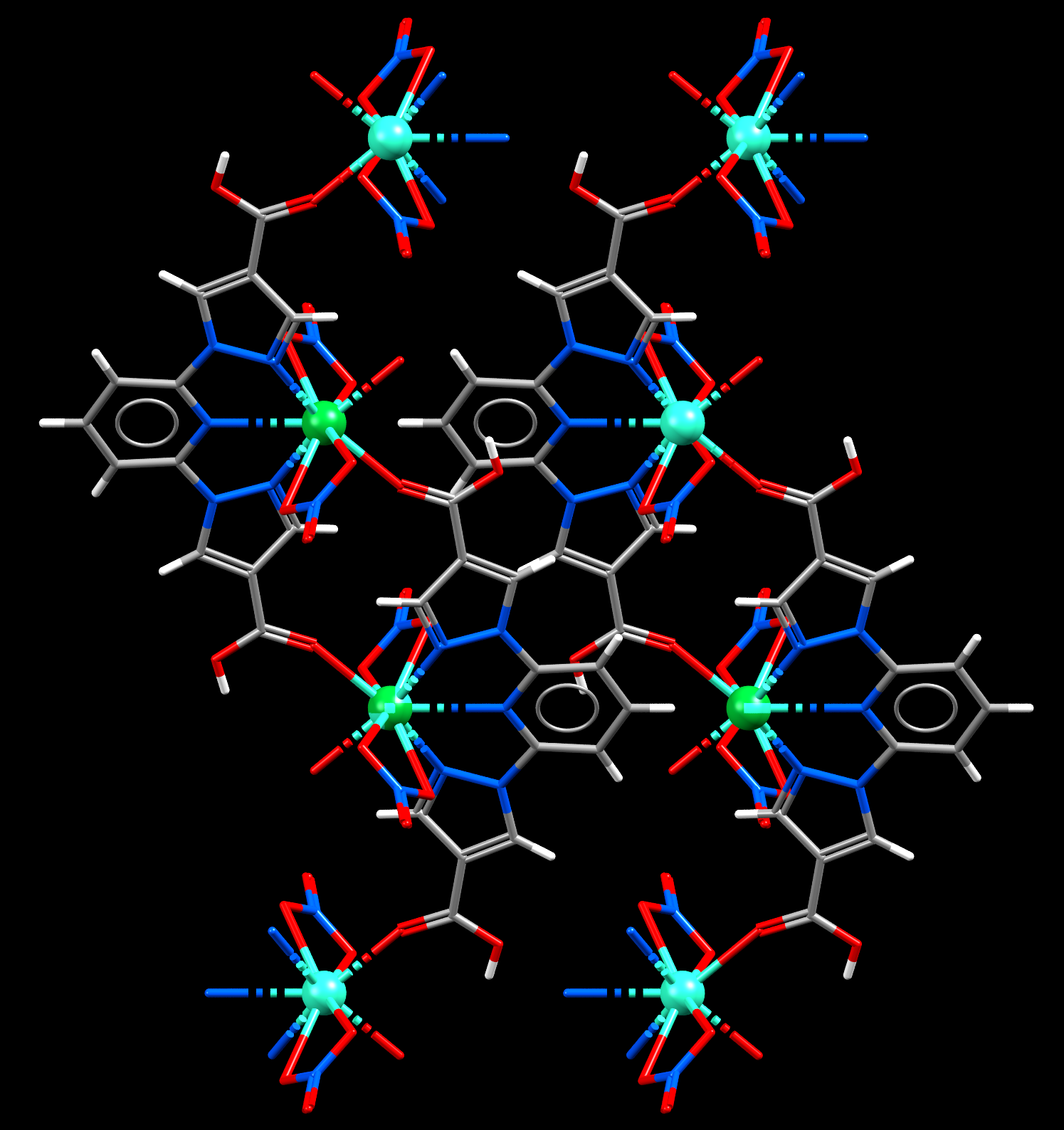Terbium
Terbium:

Image of Terbium being using in color tube of old PC screen as a green phophors.
Facts about Terbium:
- Terbium: Terbium is a silvery-white metal that is malleable, ductile, and soft enough to be cut with a knife.
- Fun fact about Terbium: Terbium was first identified in by Carl Gustaf Mosander, a Swedish chemist in 1843. He detected its oxide as an impurity in yttria (mainly yttrium oxide, Y2O3). Yttria was named after Ytterby, as it was derived from a mineral discovered in a mine close to this Swedish village.
- Chemical symbol: Tb
- Atomic number: 65
A crystal structure containing Terbium:

Image showing a Tb(III)/Yb(III) solid solution, displayed as a green spheres, in a Metal Organic Framework with special luminescent properties.
Facts about this structure:
- Formula: (C13 H8 N7 O10 Yb1)0.62n, 0.38n(C13 H8 N7 O10 Tb1)
- Structure name: catena-[(μ-1-[6-(4-carboxy-1H-pyrazol-1-yl)pyridin-2-yl]-1H-pyrazole-4-carboxylato)-bis(nitrato)-ytterbium(iii) (μ-1-[6-(4-carboxy-1H-pyrazol-1-yl)pyridin-2-yl]-1H-pyrazole-4-carboxylato)-bis(nitrato)-terbium(iii)]
- Fun fact about the structure: This structure presents an uncommon luminescent behaviour due to metal to metal energy transfer.
- CSD refcode: UGIQEJ (What’s this?)
- Associated publication: Paloma Martinez-Martin, Josefina Perles, Juan Carlos Rodriguez-Ubis, Crystals, 2020, 10, 69, DOI: 10.3390/cryst10020069
More about Terbium:
As with all rare earths, Terbium is present in the entire earth’s crust, though its concentration is very tiny (less than 0,1 ppm), since it is never extracted alone, but mixed with other minerals. The main supplies of Terbium are in the South of China, but this metal is in short supply from 2012. Terbium is also used in alloys and in the production of electronic devices. For this reason, the availability and access to Terbium is a source of concern for most industrialized countries as new technologies, which are based on electronic devices, need large quantities of Terbium.
Learn More About the International Year of the Periodic Table (IYPT) in Crystals Project:
This project (#IYPTCrystals) is part of the International Year of the Periodic Table celebration (#IYPT2019), read more about the project here.
You can follow us on social media; search for #IYPTCrystals or follow The CCDC on X @ccdc_cambridge on Facebook ccdc.cambridge, on Instagram ccdc_cambridge or on YouTube CCDCCambridge.
Understand some of the terms and concepts used with our Frequently Asked Questions page here.
A 3D visualization showing Terbium in a real crystal structure: